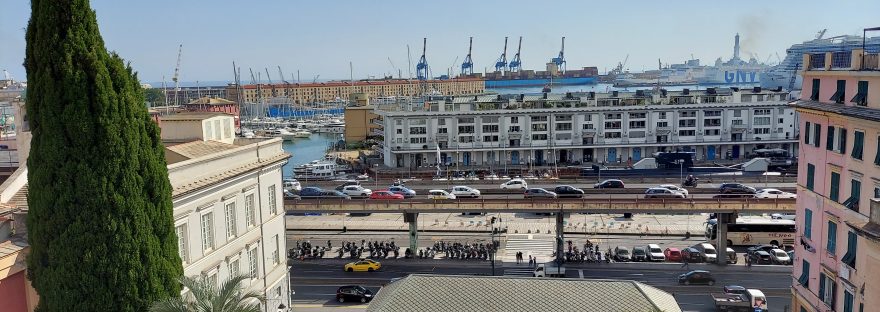The capital of Liguria, Genoa, is one of the twenty regions that make up the Italian Republic and the largest seaport in Italy for several centuries. Genoa is located in the northwest of Italy and is famous for its old quarter, its splendid palaces and its busy squares. Moreover, for obvious reasons, all the stories in Genoa are linked to the sea, being the birthplace of Cristoforo Colombo, the great discoverer of the Americas. And not least, Genoa is known as the kingdom of pesto and focaccia.
Genoa Piazza Principe Station and Cristoforo Colombo Monument
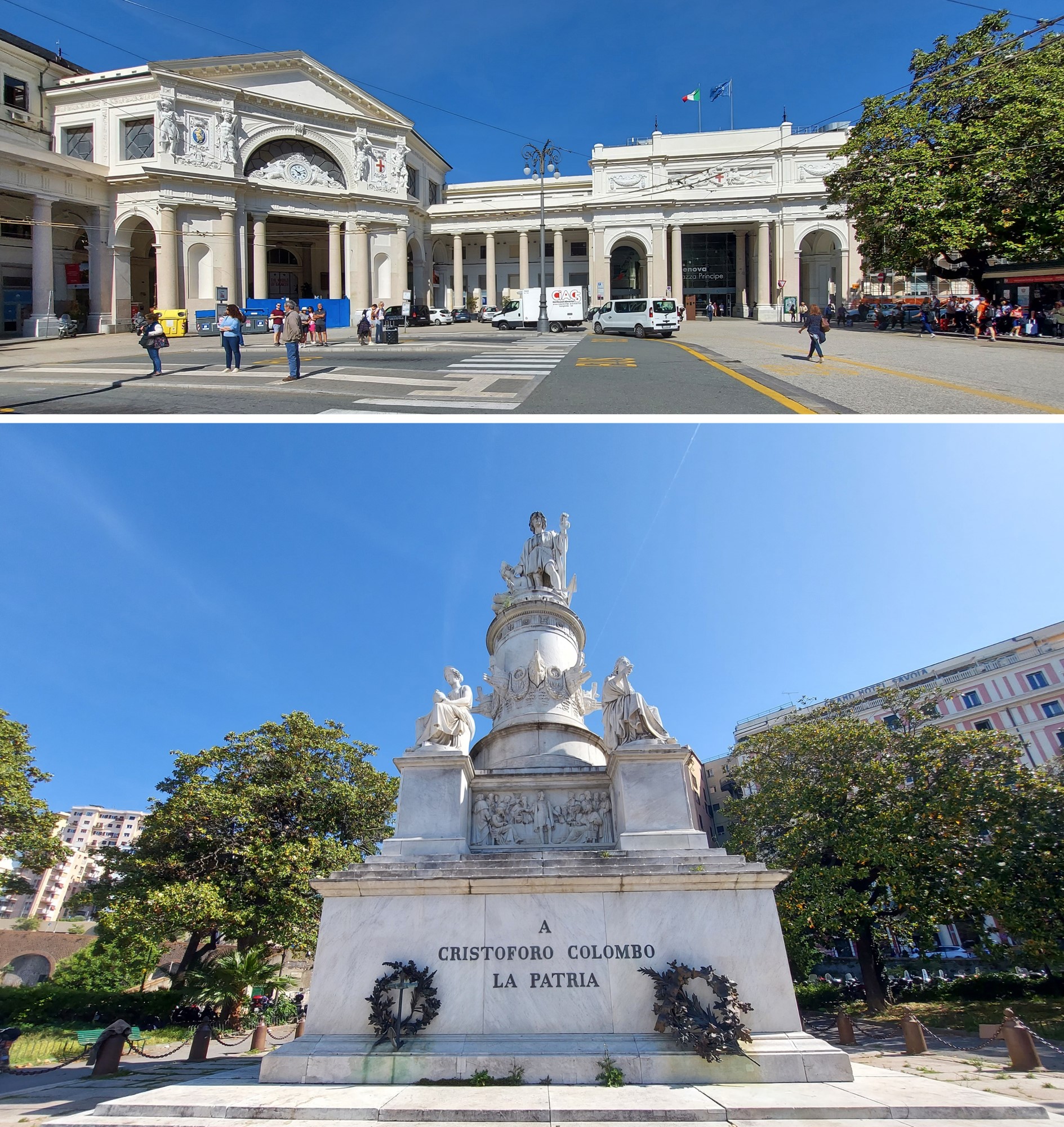
We left very early for Genoa from Milan, arriving in less than two (2) hours at the Genoa Piazza Principe train station. As we left the station, as we usually do, we stopped to look at its facade, which has a very classical style. The station is located in Piazza Acquaverde, in the center of the city and within walking distance of the Villa del Principe and the Palazzo di Andrea Doria, from which it takes its name. Beside the Genova Piazza Principe station, we find the monument to Cristoforo Colombo, which could not be missed.
Porto Antico
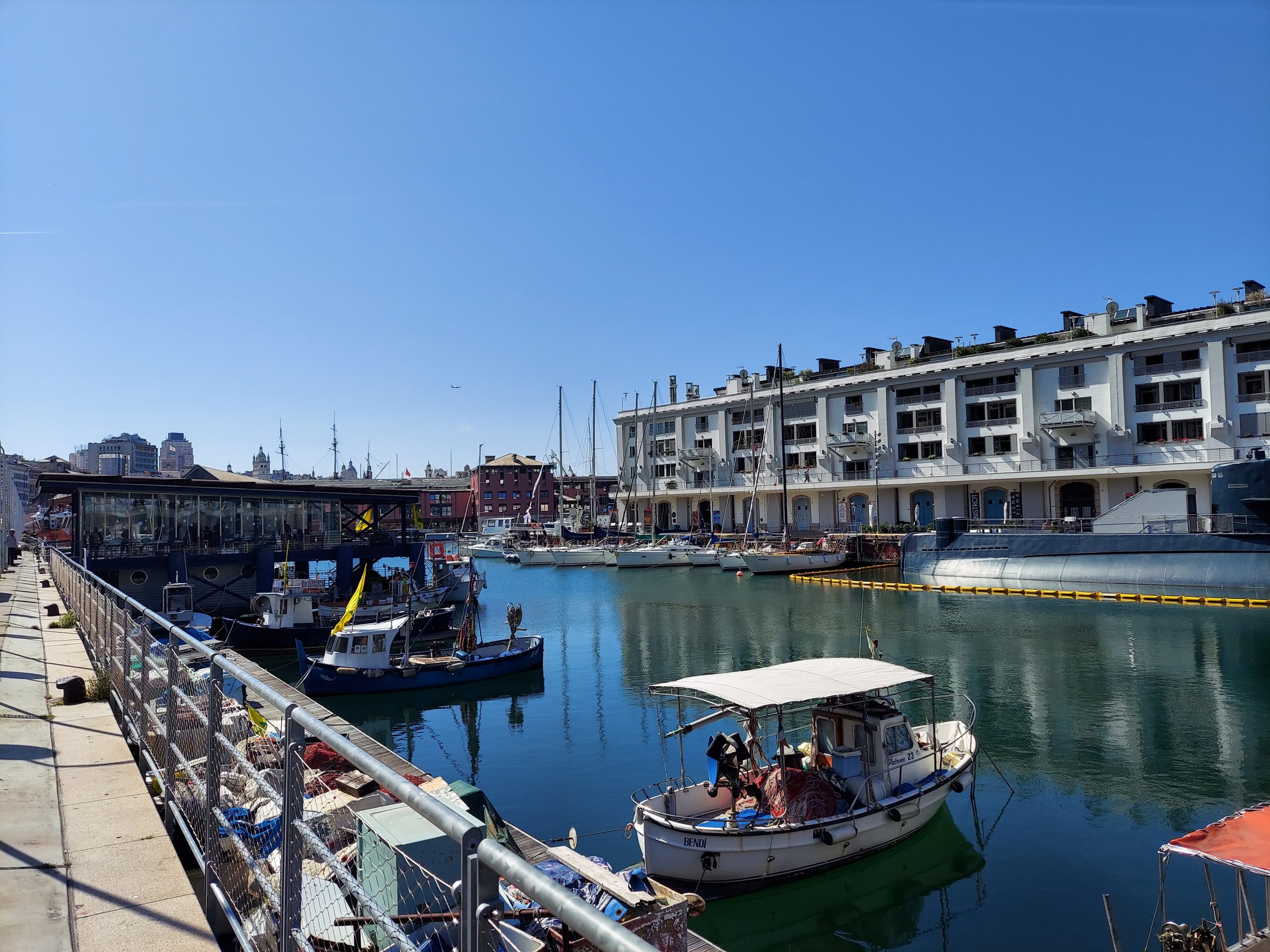
Our one-day tour of Genoa began in the Porto Antico, which is the heart of the city. Located on the shores of the Ligurian Sea, this is a modern area of a millenary city, the junction point between the sea and the historic center. Porto Antico has been active since the 5th century BC, being the center of maritime traffic in antiquity and during the Middle Ages. The development of port activities grew very quickly until the 16th century; but, upon the discovery of America, maritime traffic was diverted towards the Atlantic.
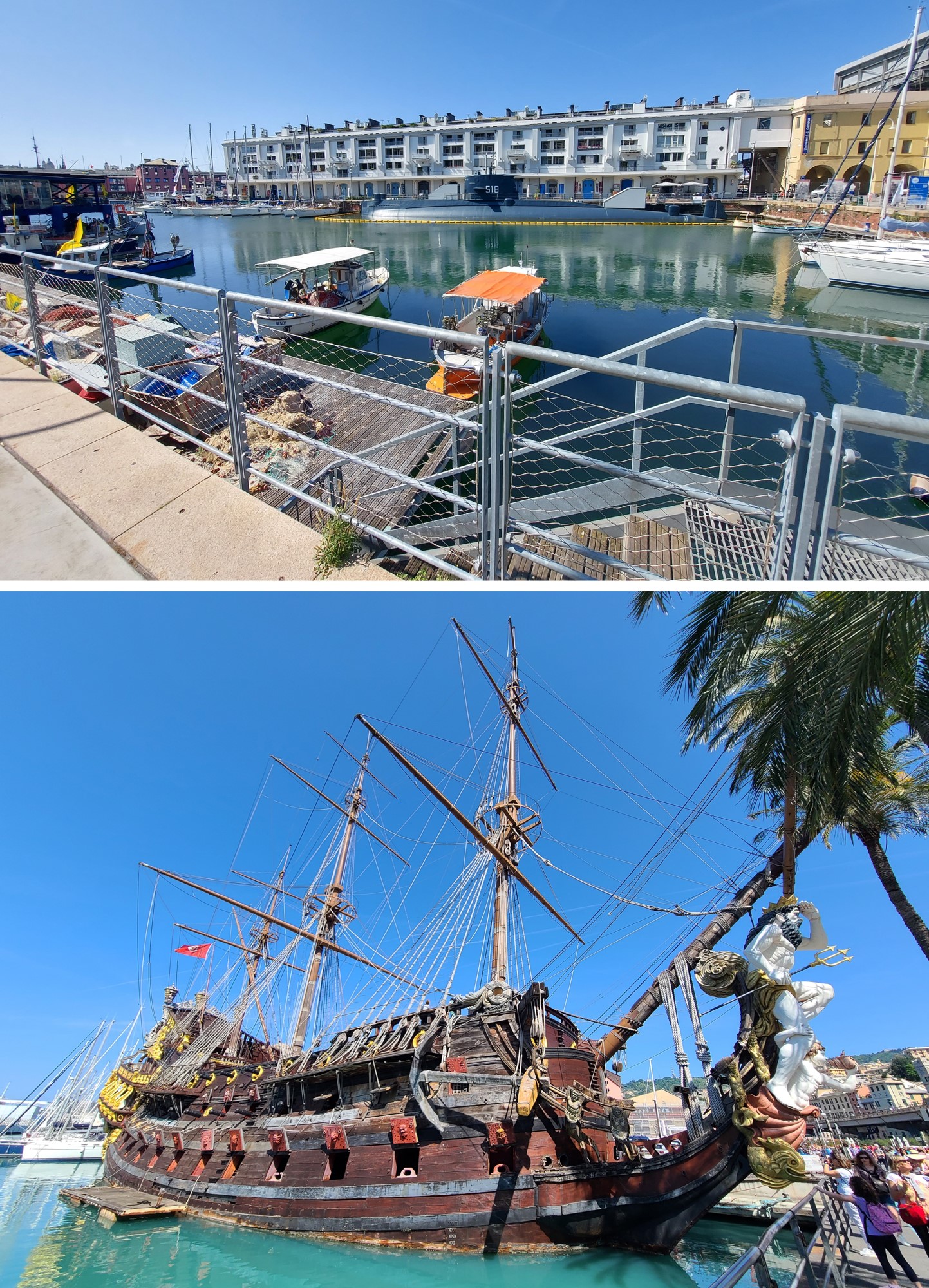
In Porto Antico you can find one of its main attractions, the Acquario di Genova, inaugurated in 1992 on the occasion of Colombiadi, the Expo that celebrated the fifth centenary of the European discovery of America. There is also the dome-shaped Biosfera Zoo on the water and the Vascello Neptune, a famous galleon used in the movie “Pirates” by R. Polanski, which can be visited today. On the quay is moored the famous Sommergible Nazario Sauro, and the Museo del Mare de Galata that allows visitors to experience a journey among ancient ships and maritime curiosities with multimedia installations. Porto Antico is a place of tourism, culture, congresses, fairs, shows, sports, sailing, shopping, restaurants and much more.
Palazzo San Giorgio
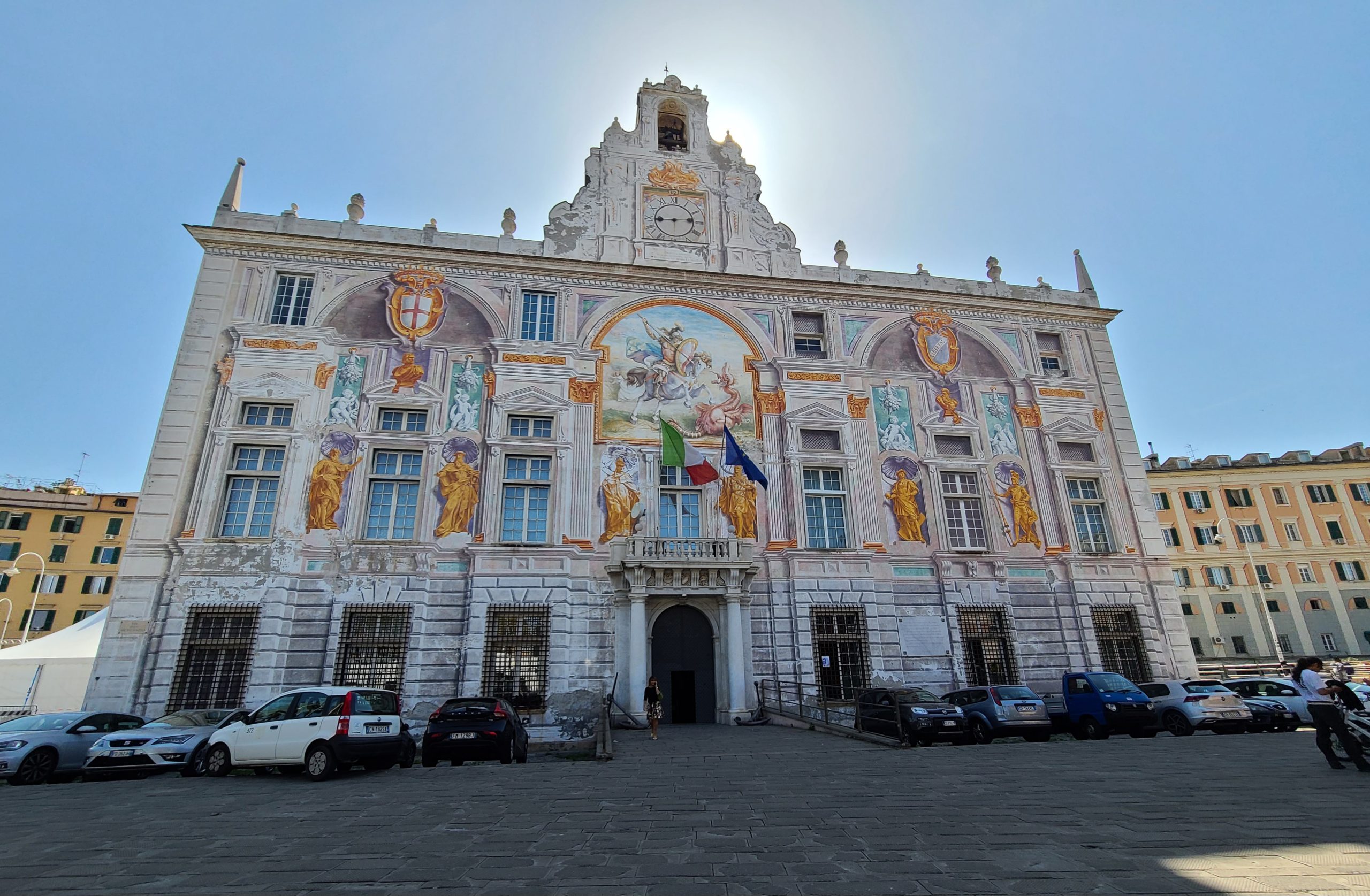
One of the most important and well-known historical buildings in Genoa is Palazzo San Giorgio, built between 1257 and 1260, located in Piazza Caricamento. From 1340, the palace became the seat of the magistrates for the control of port traffic and the customs and the offices of the so-called Compere, bodies in charge of managing the cash loans that citizens made to the Municipality, were established. Palazzo San Giorgio consists of two parts: an older one, a typical example of medieval civil architecture, and another in Renaissance style. According to legend, in the second half of the 13th century, the palace also housed the prisons in which Marco Polo was imprisoned.
Cathedral of San Lorenzo
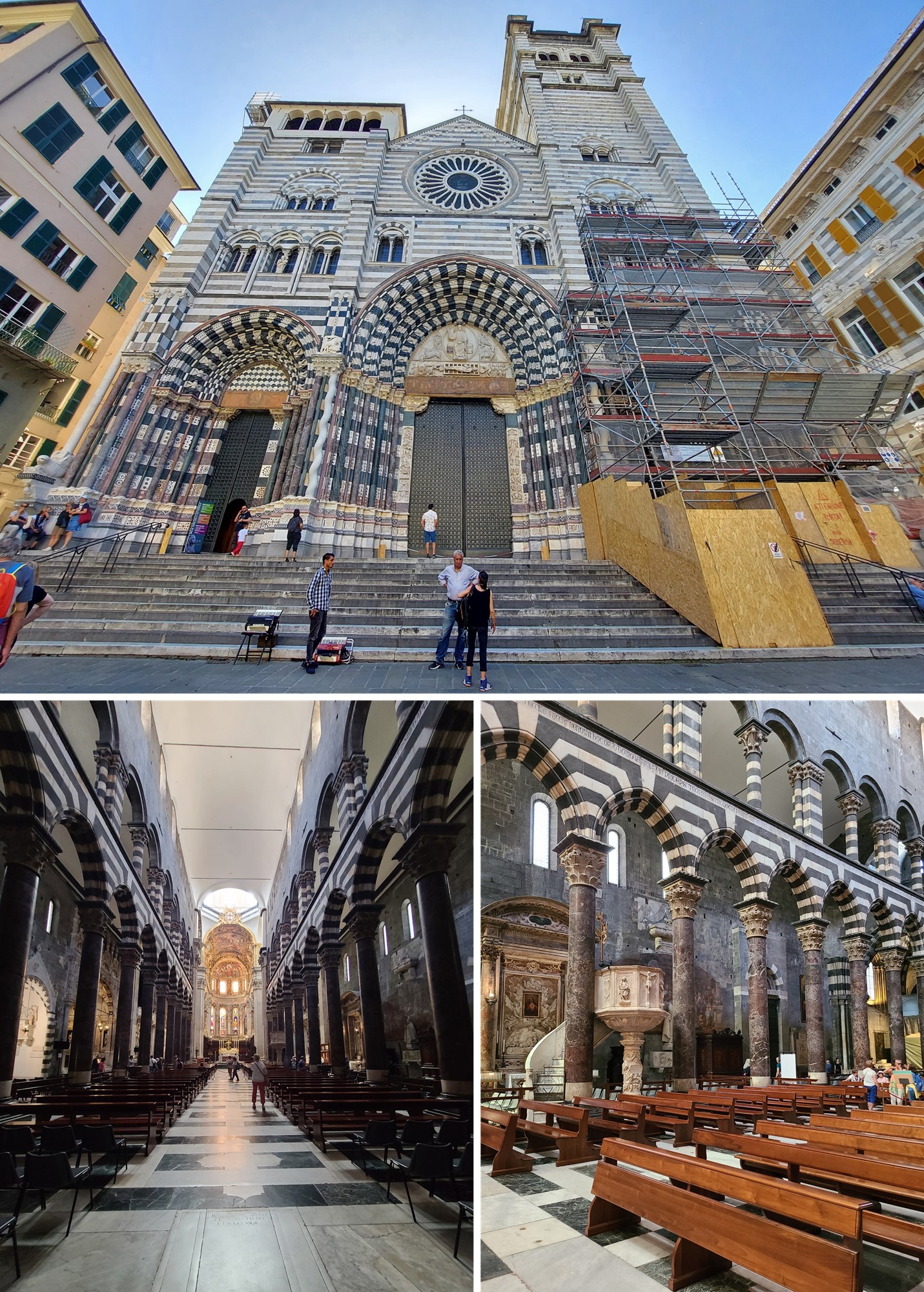 It is impossible not to be enchanted by the majesty of the black and white banded facade of the Cattedrale di San Lorenzo, the most important church in Genoa. It was built around 1098, over the basilica of the Twelve Apostles, dedicated in the 6th century to San Siro, bishop of Genoa, which dates back to the 6th century. This cathedral dedicated to San Lorenzo Martire contains the ashes of the patron saint San Giovanni Battista, who arrived in Genoa at the end of the First Crusade. To complete the visit to the cathedral, one should visit the Treasury Museum, which can be accessed from inside the cathedral and the nearby Diocesan Museum.
It is impossible not to be enchanted by the majesty of the black and white banded facade of the Cattedrale di San Lorenzo, the most important church in Genoa. It was built around 1098, over the basilica of the Twelve Apostles, dedicated in the 6th century to San Siro, bishop of Genoa, which dates back to the 6th century. This cathedral dedicated to San Lorenzo Martire contains the ashes of the patron saint San Giovanni Battista, who arrived in Genoa at the end of the First Crusade. To complete the visit to the cathedral, one should visit the Treasury Museum, which can be accessed from inside the cathedral and the nearby Diocesan Museum.
Church of Jesus and Saints Ambrogio and Andrea
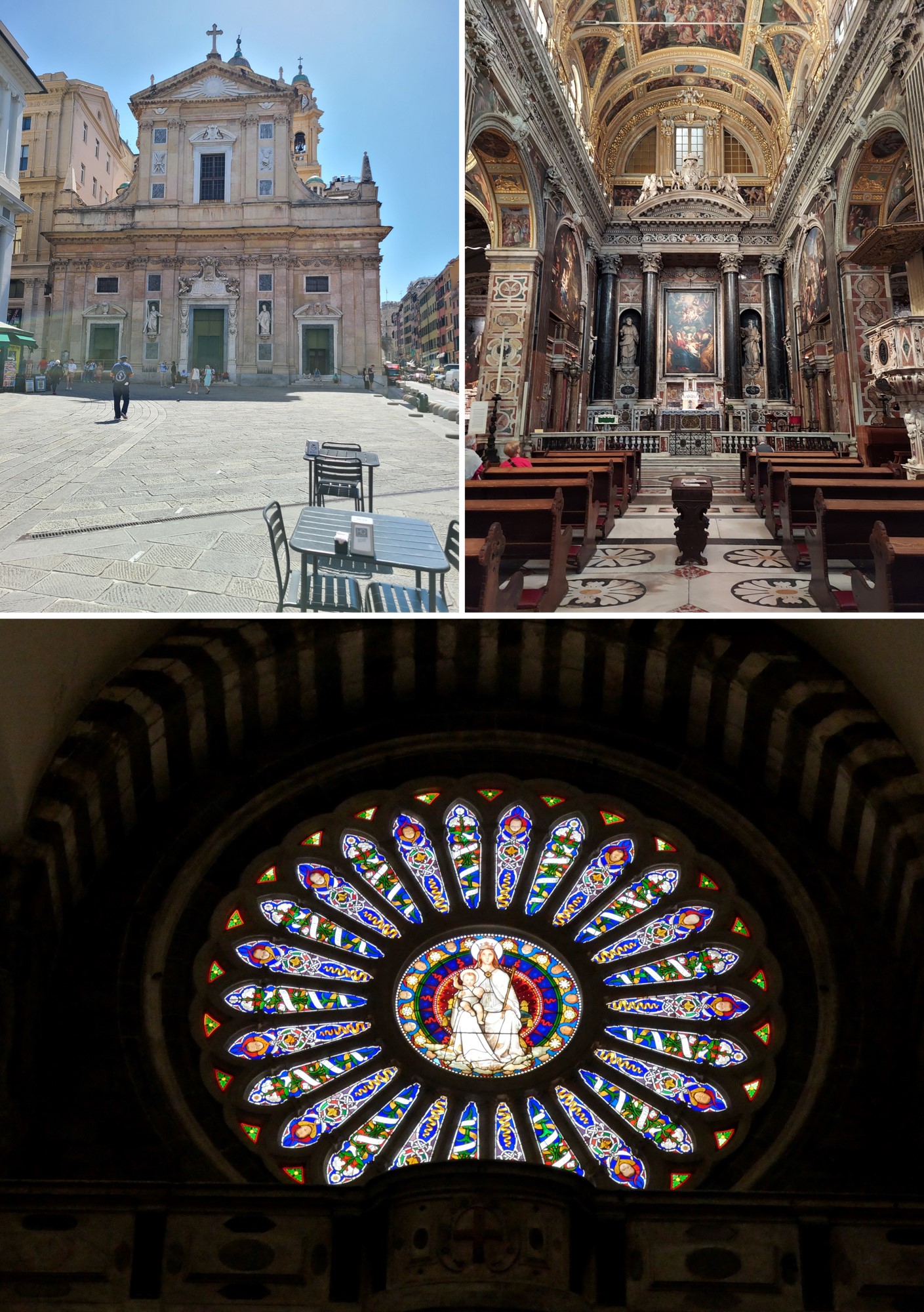
Very close to the Cattedrale di San Lorenzo is the Chiesa di Gesù e dei Santi Ambrogio e Andrea, another architectural jewel in the heart of Genoa. A small church, which keeps inside all the baroque grandeur making it a treasure. Although its exterior may lack decorative details, its interior is a display of magnificent decorations and works of art. The Chiesa di Gesù e dei Santi Ambrogio e Andrea is a perfect example of the baroque style, where every corner shows the decorative details through fresco paintings, sculptures and abundant gold leaf. We recommend checking the Holy Mass celebration schedules in this church, as tourist visits are not allowed during these times.
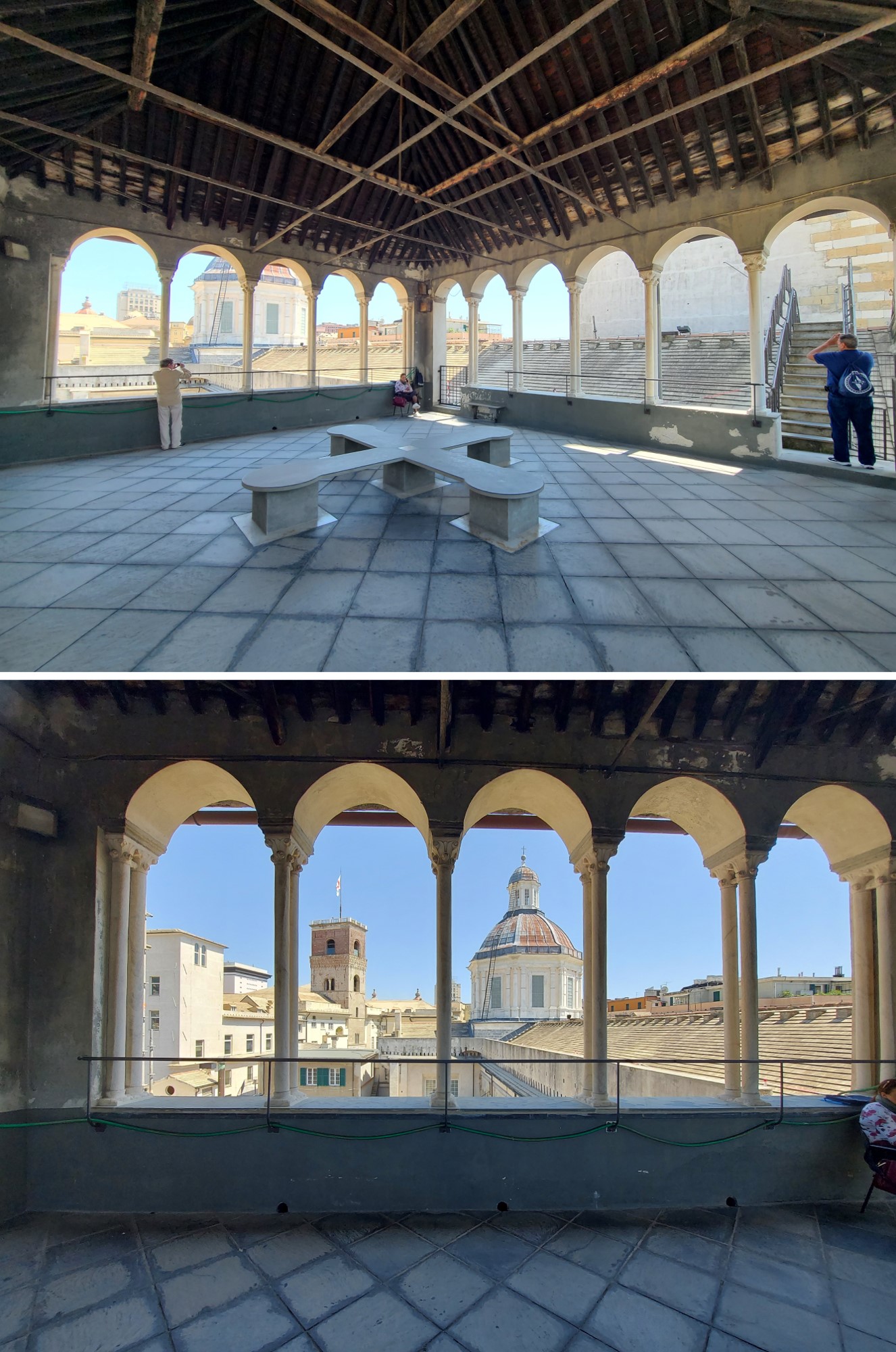
We recommend climbing its tower for the enjoyment of extraordinary panoramic views from a sort of covered terrace.
Porta Soprana
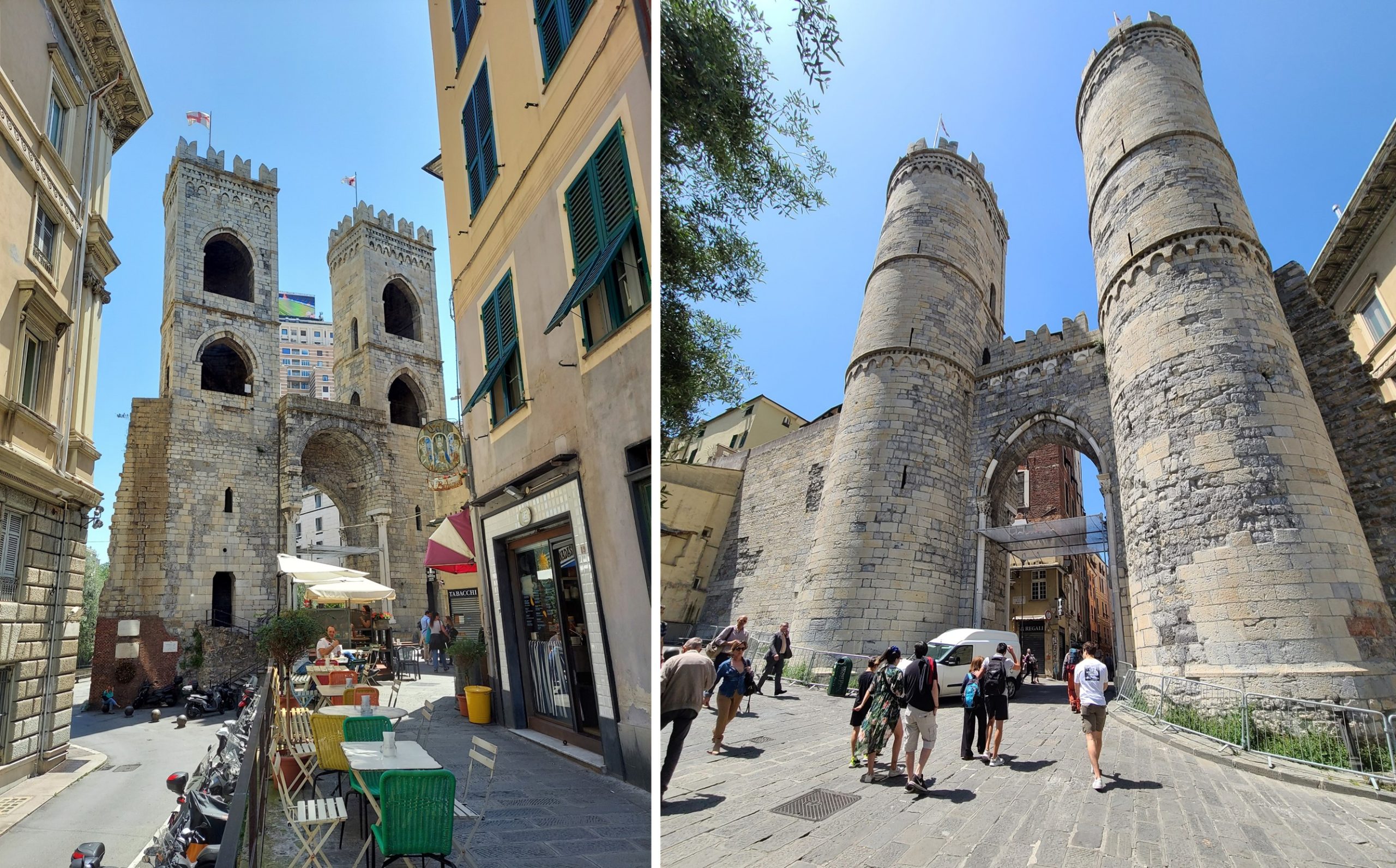
Then we reach the Porta Soprana, one of the three gates with two towers that were built in Genoa in the Middle Ages. This thanks to the expansion purposes of the Holy Roman Emperor Frederick I of Swabia, known as Frederick Barbarossa. For this reason, in the 12th century, the new walls of the city of Genoa were built in order to defend the independence of the Republic, called the Walls of Barbarossa. The construction of the Porta Soprana, as well as the other gates, took only four years, between 1155 and 1159. This was achieved thanks to the participation of most of the inhabitants who provided the labor and capital for the construction. The Porta Soprana represented the entrance to the city for all those arriving from the east.
Chiostro di Sant’Andrea
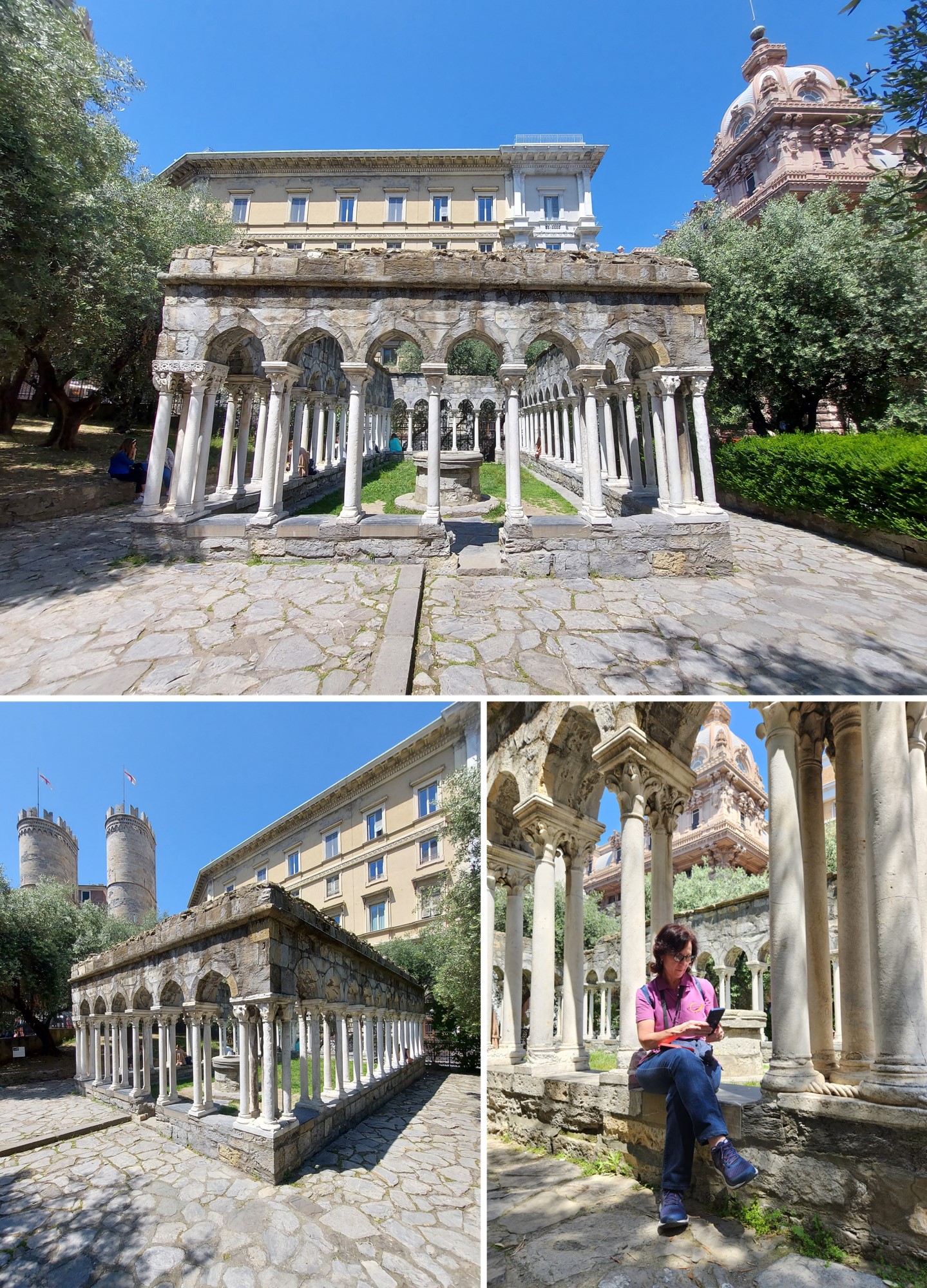
One structure that captured our attention from the first moment was the Chiostro di Sant’Andrea. This cloister belonged to the monastic church and parish of Sant’Andrea della Porta, whose first construction dates back to the beginning of the year 1000, in Romanesque style. Between 1900 and 1906 it was completely demolished, together with the hill on which it stood, to allow the urban restructuring of the area and the construction of the Bank of Italy building. The only part that it was decided to save was the 12th century medieval cloister.This was dismantled and moved some twenty years later to its present location.
Casa di Colombo
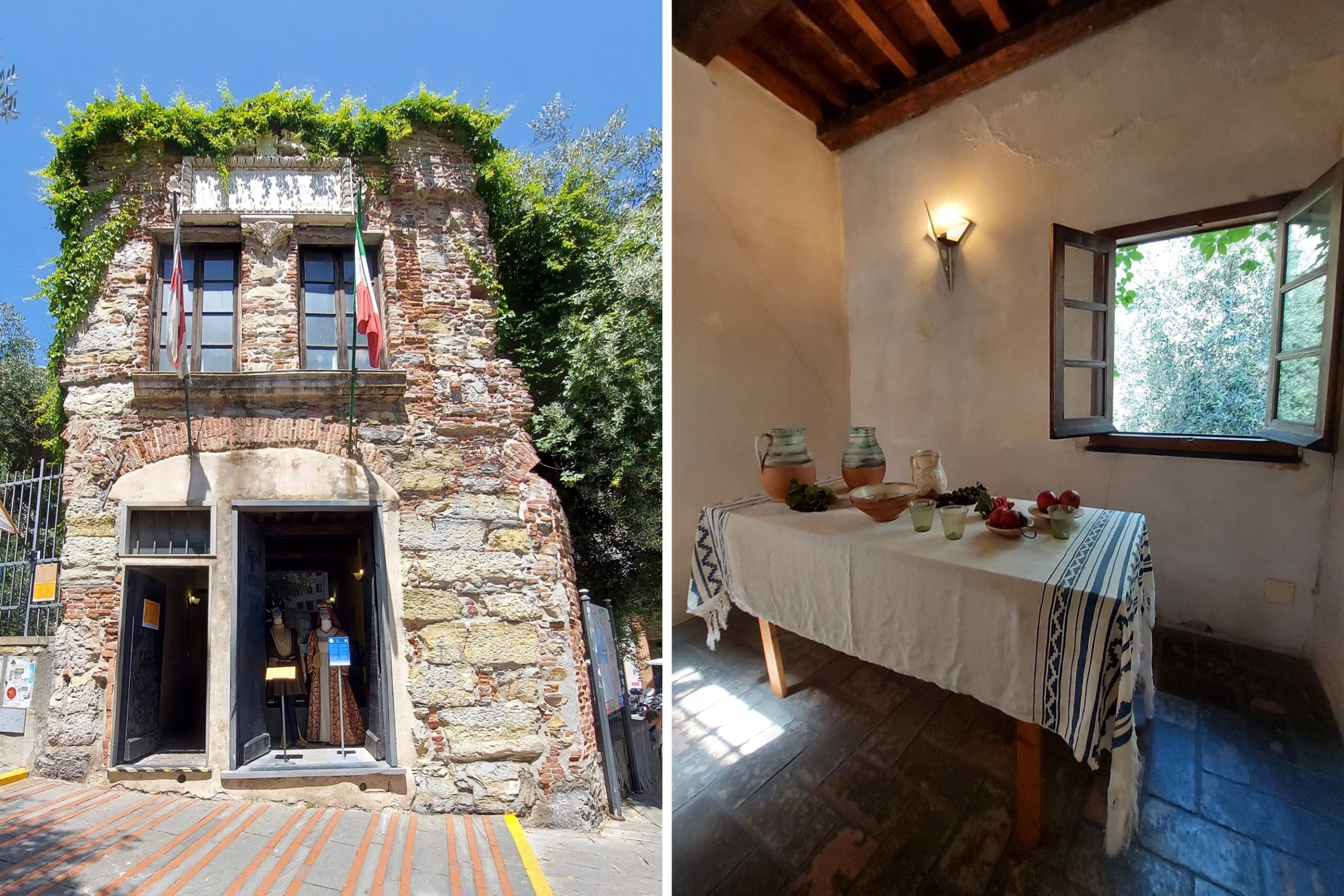
The house where Cristoforo Colombo grew up was located next to the Porta Soprana outside the walls. According to historical data, the original house was destroyed during the French bombardment of Genoa in 1684. It was rebuilt in the early 18th century on the ruins of the house considered to be the original, of which only the foundations remained. The rebuilt structure had a height of five stories, although later, in 1900, with the demolition of the neighboring buildings, the upper floors of the structure were removed, and it was reduced to the two-story height we see today. Today the building is used as a museum, under the management of the Genoese cultural association Porta Soprana.
Piazza Raffaele De Ferrari
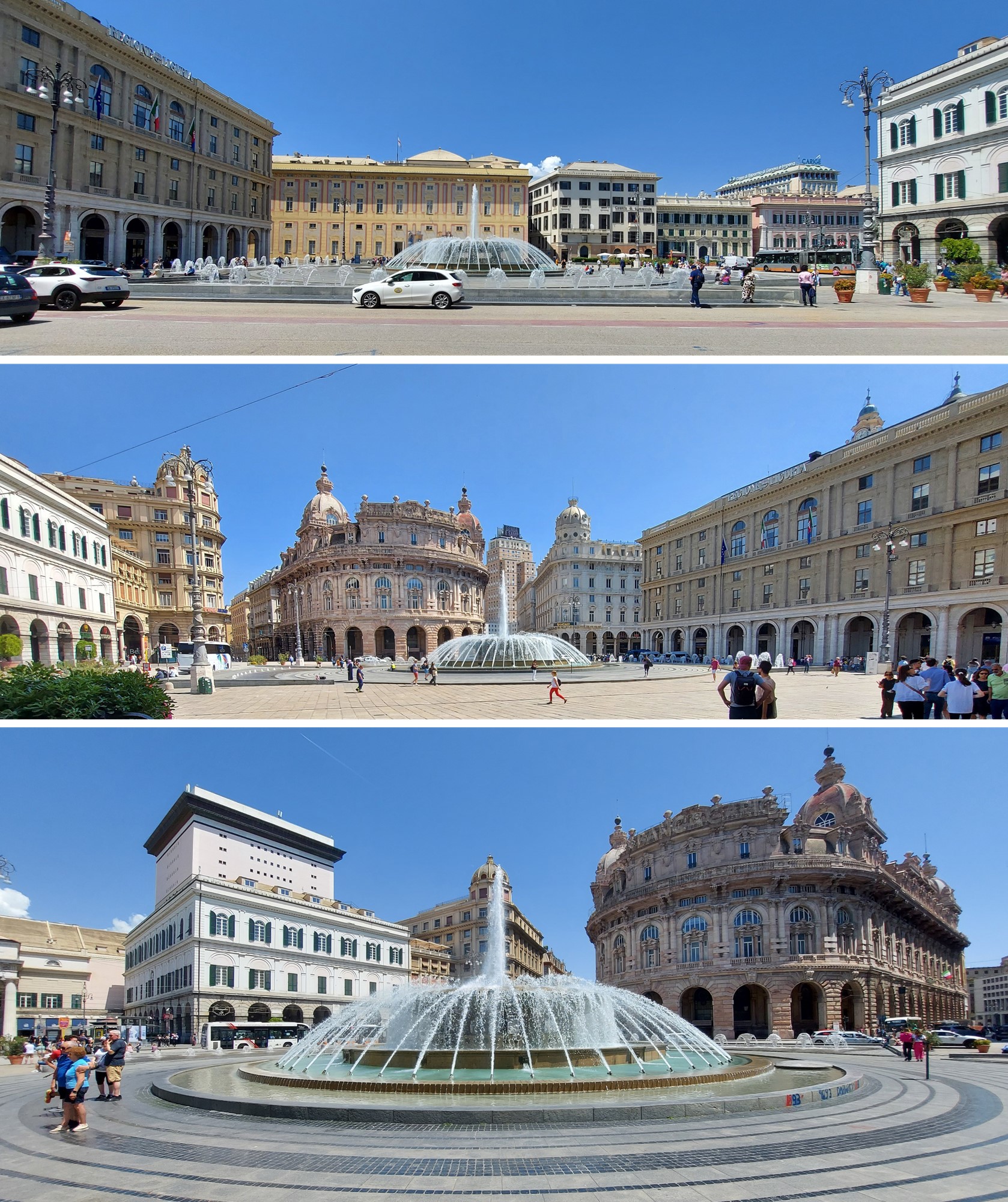
The Genoese affectionately call their main square “Il cuore pulsante della città di Genova”, i.e. the pulsating heart of the city of Genoa. It is located right in the center of the old town, and is a meeting place for important civic events. The square is dedicated to Raffaele De Ferrari, Duke of Galliera, who in 1875 donated a large sum of money for the expansion of the port. In the center of the square is the monumental bronze fountain, built in 1936 by the architect Cesare Crosa di Vergagni. Nearby is the Teatro Carlo Felice and the building of the Accademia Ligustica di Belle Arti. Piazza Raffaele De Ferrari is also delimited by the lateral facade of Palazzo Ducale, the Regione Liguria building of 1920 and the Palazzo della Nuova Borsa of 1912.
Palazzo Ducale
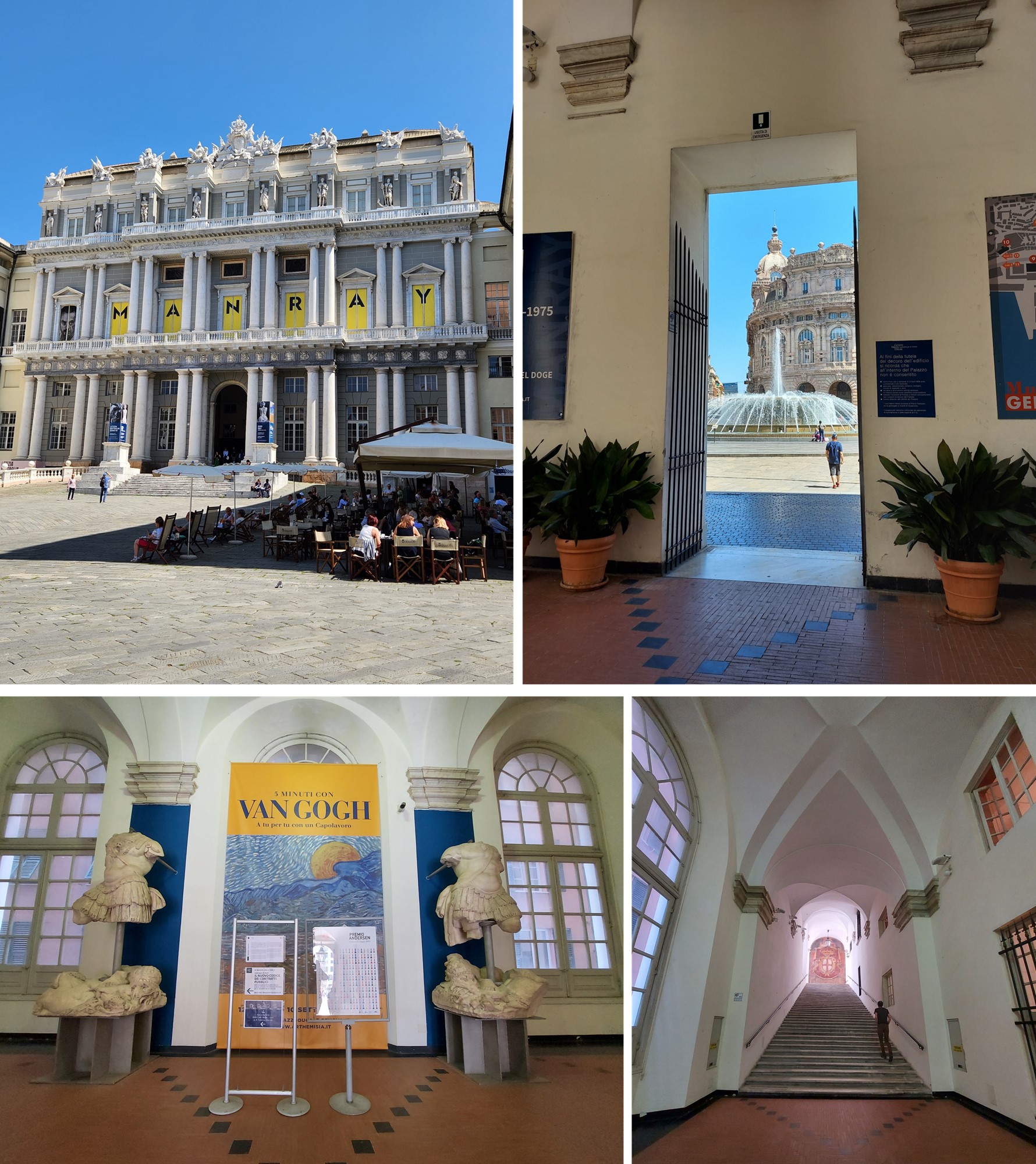
The former residence of the Doges of Genoa, the Palazzo Ducale dates back to the 13th century. It is located in the center of the city, with two different entrances and facades, the main one on Piazza Matteotti, the other on Piazza De Ferrari. In modern times, the house served as the Palace of Justice and in 2001, the G8 Congress was held in the Palazzo Ducale under the leadership of then Italian Prime Minister Silvio Berlusconi.
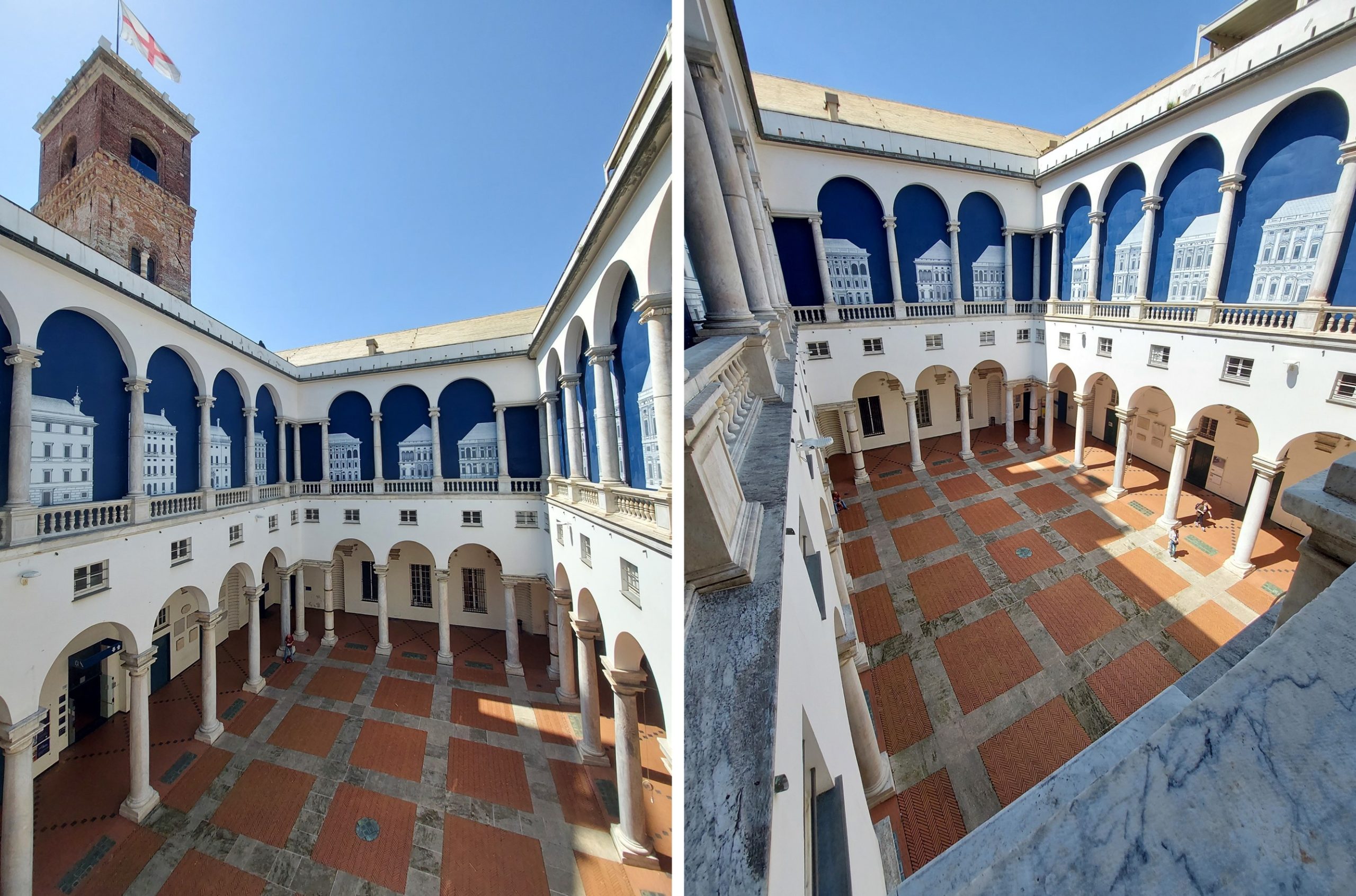
At present, the palace is mainly used for cultural purposes, holding both exhibitions and concerts on its main floor and hosting international exhibitions. It has a variety of stores and restaurants in its inner courtyard. In addition to the Palazzo Ducale, art exhibitions can be enjoyed at the Galleria Nazionale di Palazzo Spinola, which preserves the appearance of a Genoese aristocratic residence from the first half of the 17th century.
Carlo Felice Theater
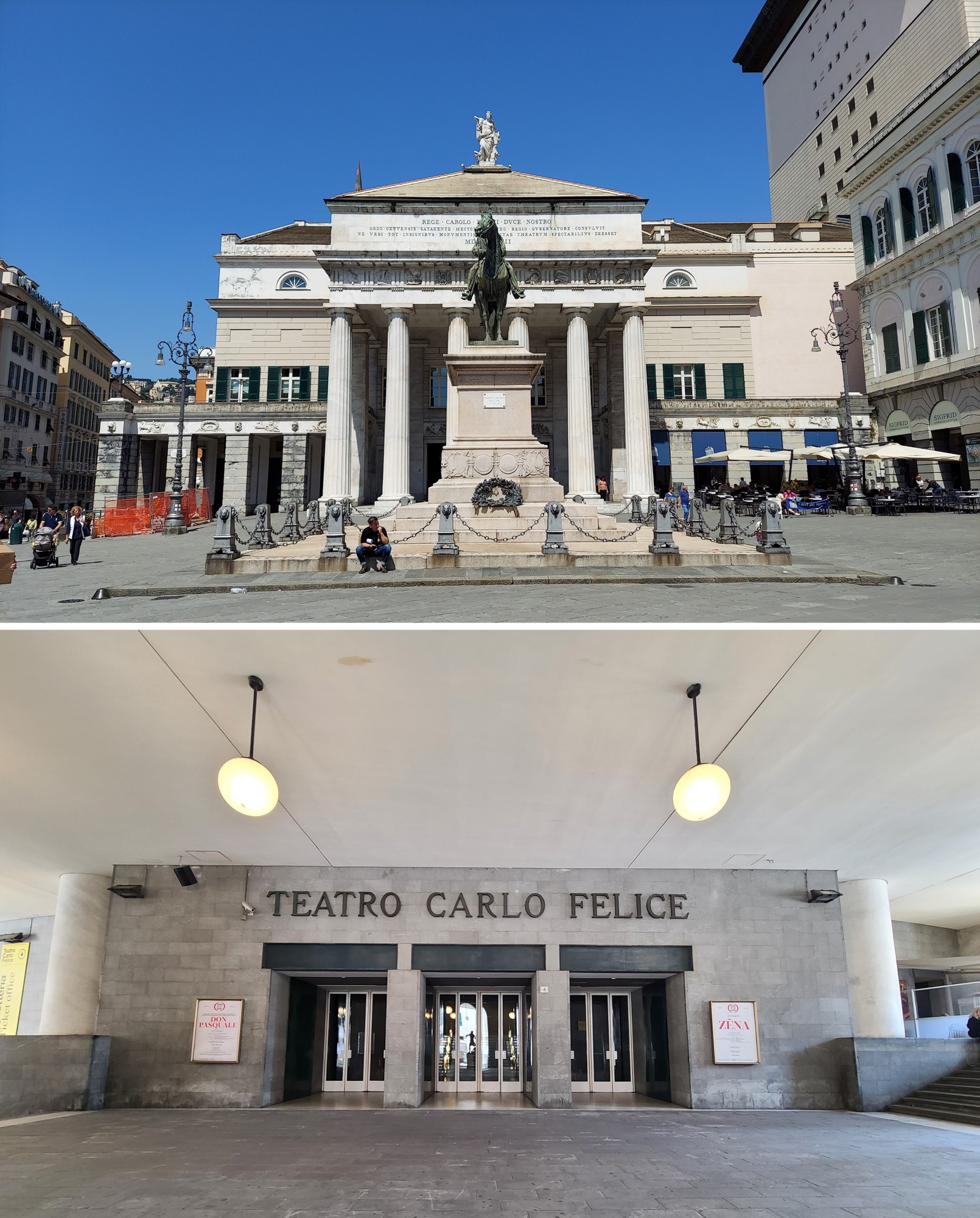
From Piazza De Ferrari we reach the Teatro Carlo Felice, Genoa’s opera house.It is the largest theater in the region and one of the best known Italian theaters that regularly delights its visitors with operas, ballets and symphonies.
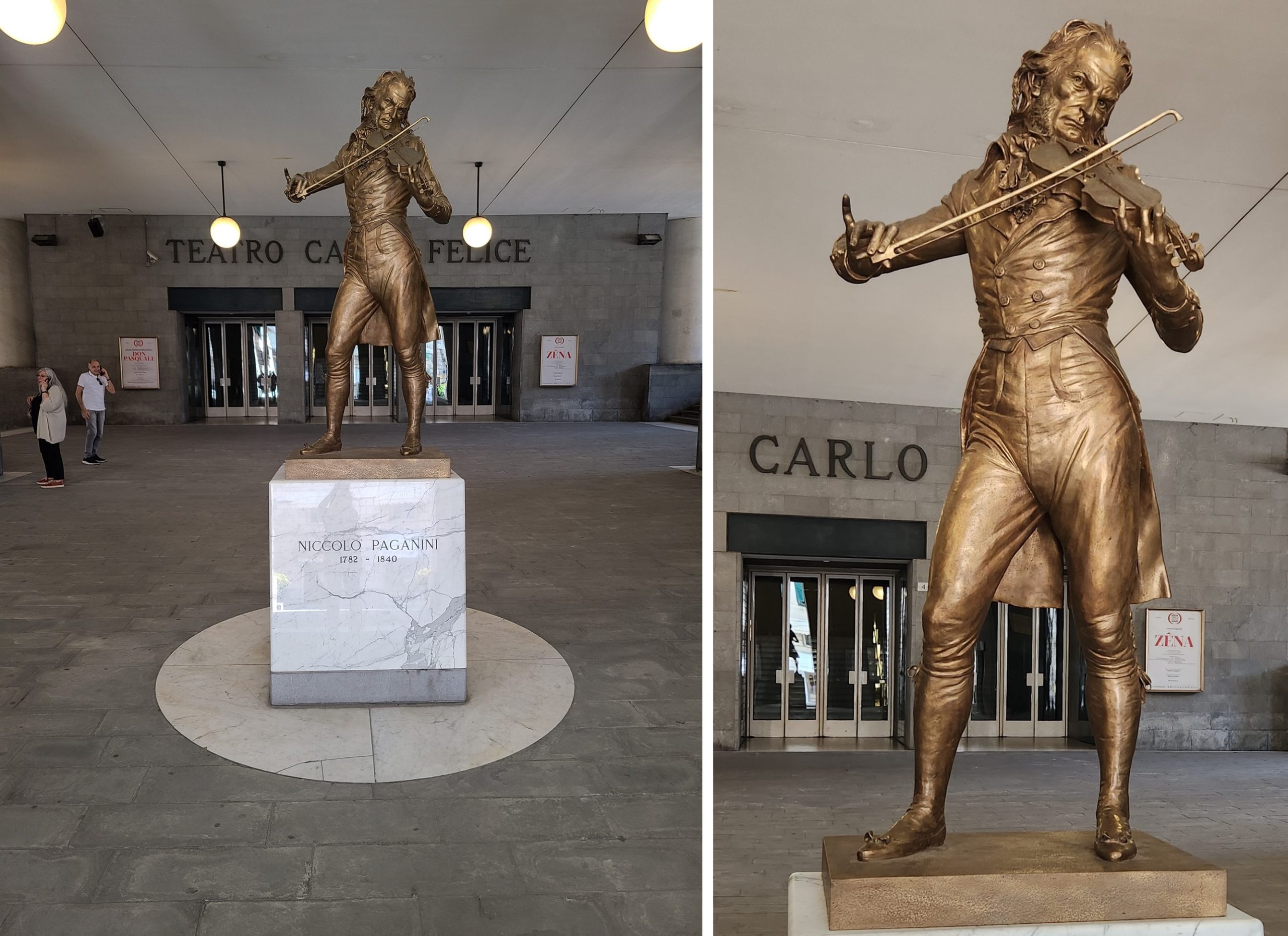
The bronze statue of Niccolò Paganini, who played here for the first time on November 30, 1834, welcomes visitors to this temple of Genoese music. The Teatro Carlo Felice was built in 1827 according to the project of the architect Carlo Barabino. During the Second World War, the building was badly damaged by bombs and was completely rebuilt.
Le Strade Nuove, Palazzi dei Rolli System
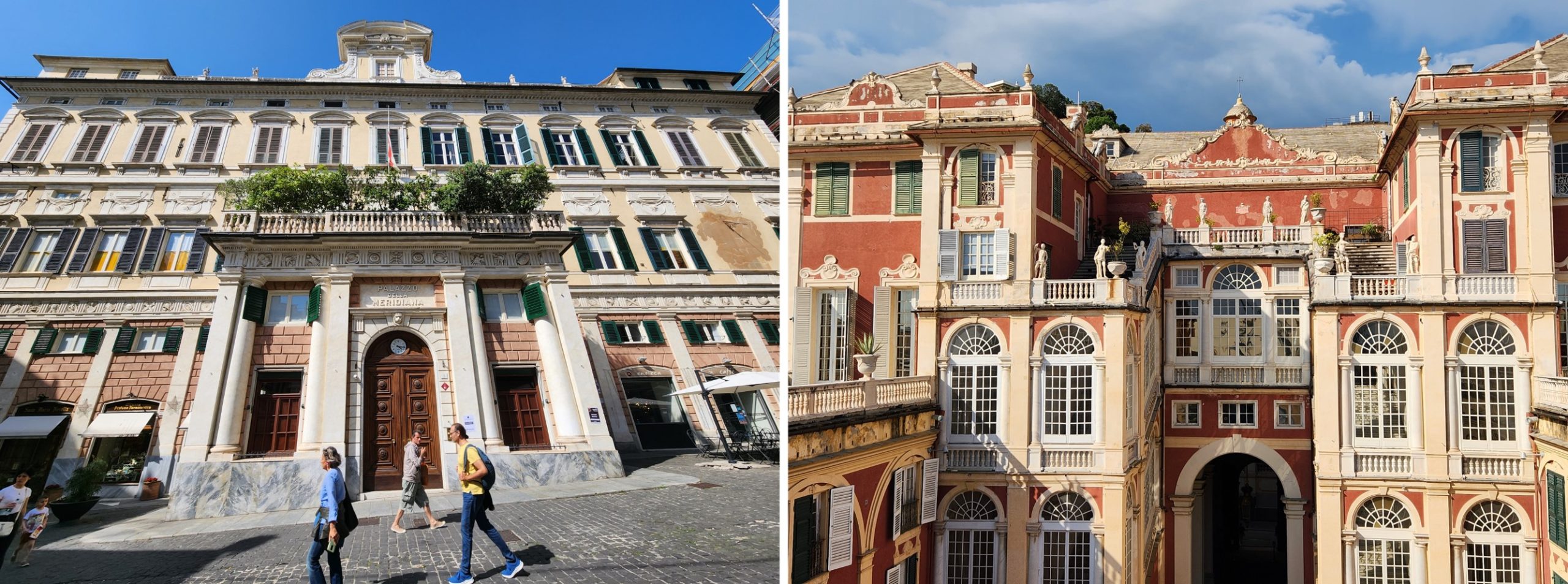
One of the areas that is important to visit in Genoa is Le Strade Nuove, i.e. new streets, which today correspond to Via Garibaldi, Via Cairoli, Via Bensa and Via Balbi. It is here that you will find the Sistema dei Palazzi dei Rolli (network of the Rolli palaces) dating from the late sixteenth and early seventeenth centuries, a time when Genoa was at the height of its financial and commercial power. The group of Renaissance and Baroque mansions found in Le Strade Nuove present a variety of extraordinary architectural solutions, due to their adaptation to the particular characteristics of their location. This site offers the first example in Europe of a unified urban planning project on plots of land. They also constitute an original example of a public system of private residences, whose owners were obliged to house official guests of the State. Forty-two buildings of the Rolli palace network are included in the UNESCO World Heritage List.
Palazzo Doria-Tursi – Municipality Genovese
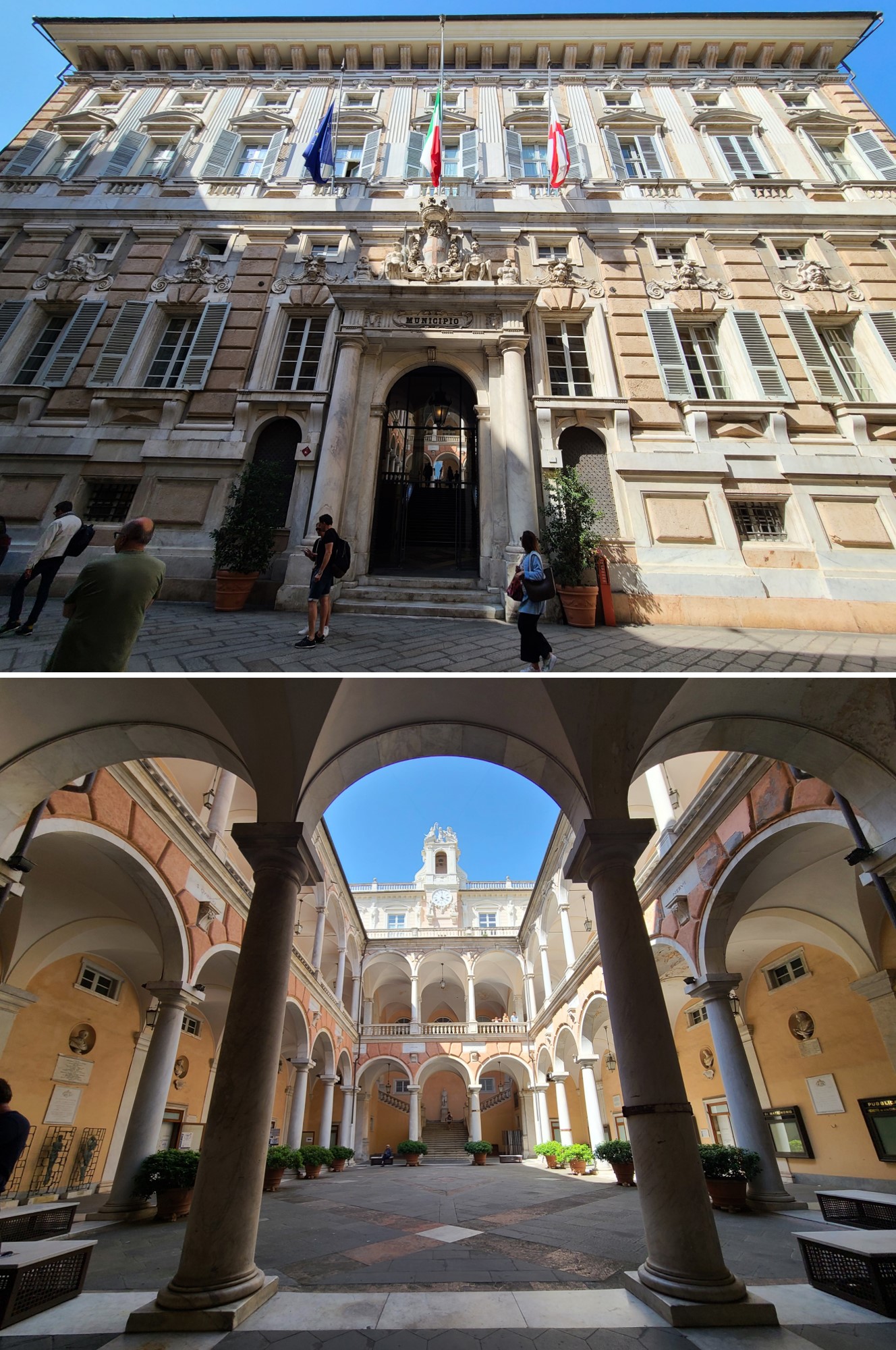
One of the buildings that are part of the Rolli network is the Palazzo Doria-Tursi, which is not only part of the museum center, but also the seat of the Genovese Municipality. It is the most majestic palace in Le Strade Nuove, with two large gardens and arcades on its two floors.
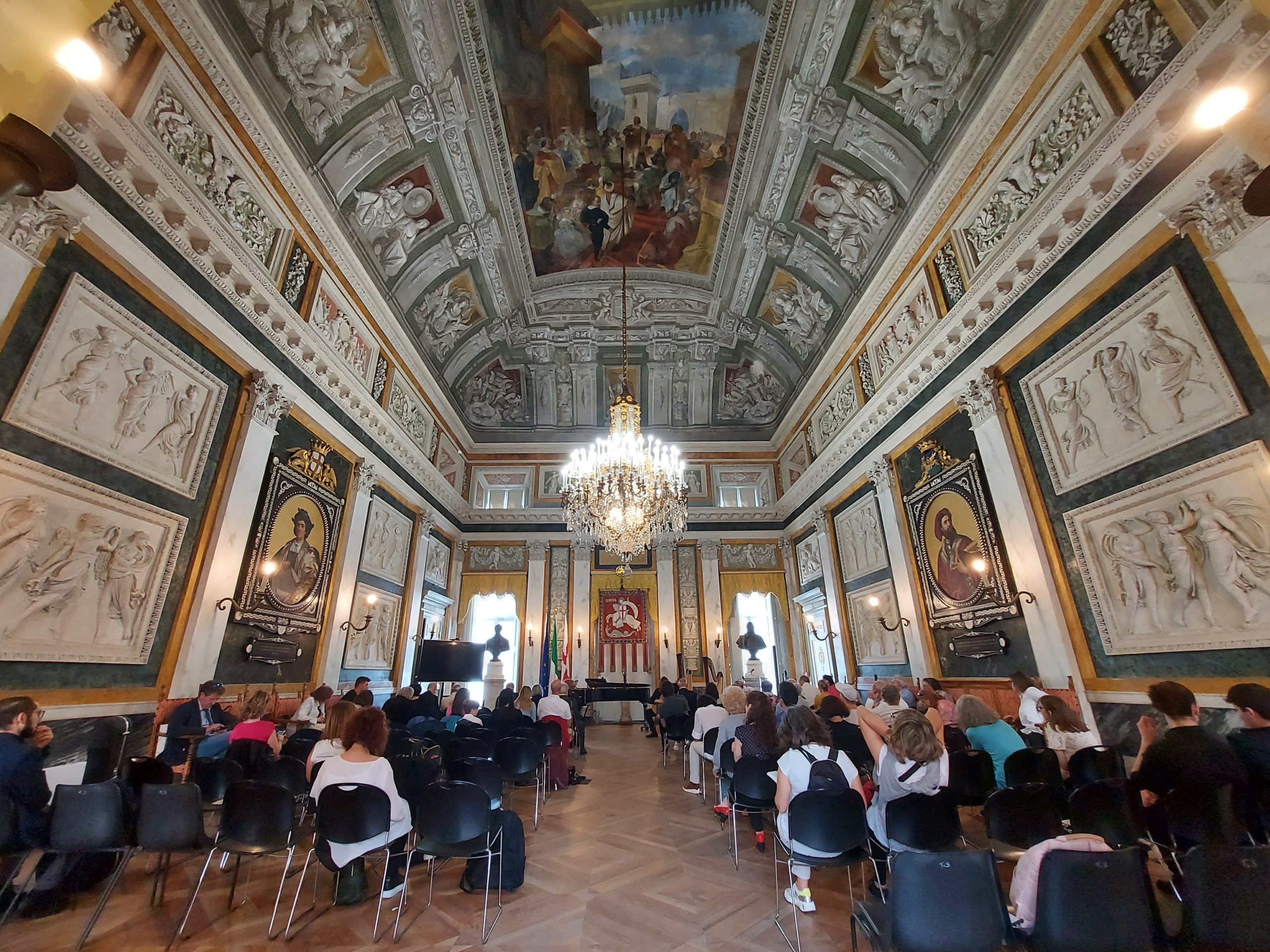
In its interior, besides admiring the penitent Magdalena sculpted by Antonio Canova, you can also appreciate the magnificent mural paintings that decorate its rooms. It is in one of these that we had the opportunity to watch a violin concert offered by the students of a music academy.
PHOTO Palazzo Balbi – Università di Genova
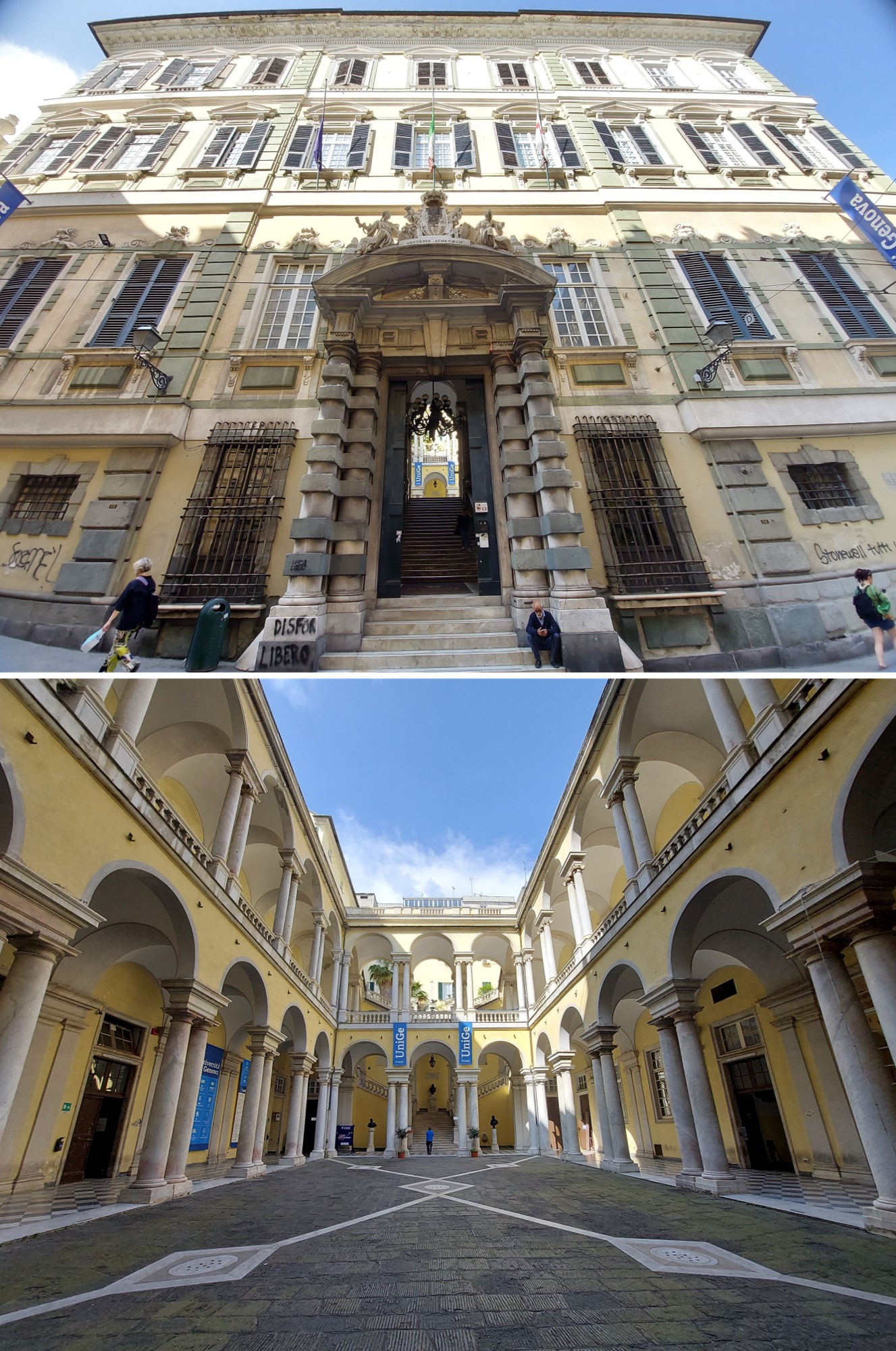
Palazzo Balbi, on the street of the same name, is the seat of the humanities departments of the Università di Genova. It is worth a visit to admire one of the most important examples of Genoese baroque. The inner courtyard is large and from there you can see the details of the arcades on the two floors that make up the building. A common element shared by these palaces.
Musei Nazionali Di Genova, Palazzo Reale
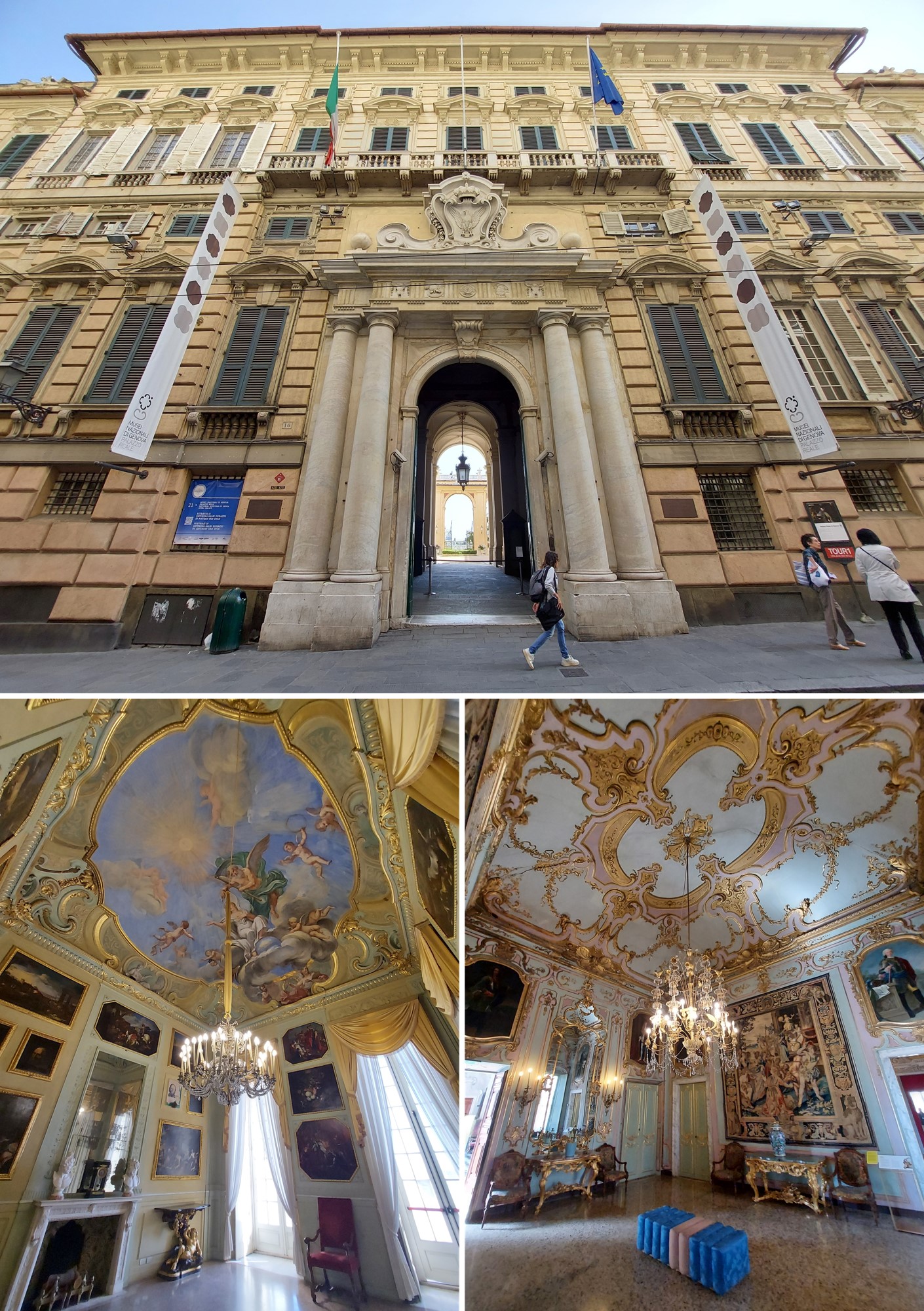
We reached Palazzo Reale or Palazzo Stefano Balbi, one of the most important historic buildings in the city, which is part of Le Strade Nuove. It is located on Via Balbi 10, within walking distance of the university campus and the Genova Piazza Principe station, so we left it for last. Its construction began between 1618 and 1620 by Stefano Balbi and Gio Francesco Balbi II. It is an important architectural complex of which the interiors and all its decorative elements are preserved intact. It was declared a World Heritage Site by UNESCO in 2006.
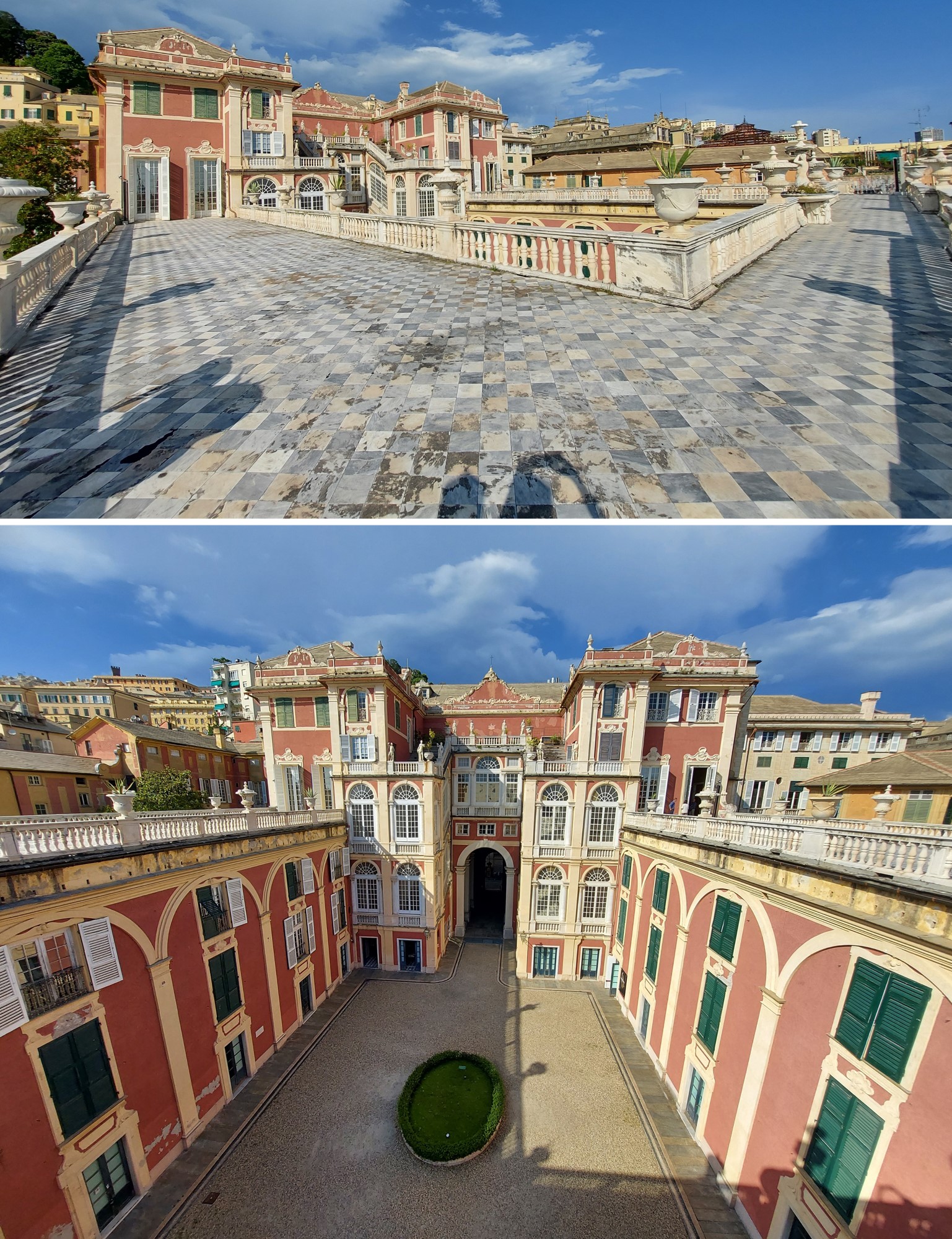
Today, the Palazzo Reale is owned by the State and it is here that the headquarters of the Superintendencies of Liguria and the Palazzo Reale Gallery are located, exhibiting one of the main art collections of the city. The historic residence itself is a museum, has an art gallery and the attached garden is very beautiful. On the second floor you can go up to the terrace and have a magnificent view of the Porto Antico.
Basilica della Santissima Annunziata del Vastato
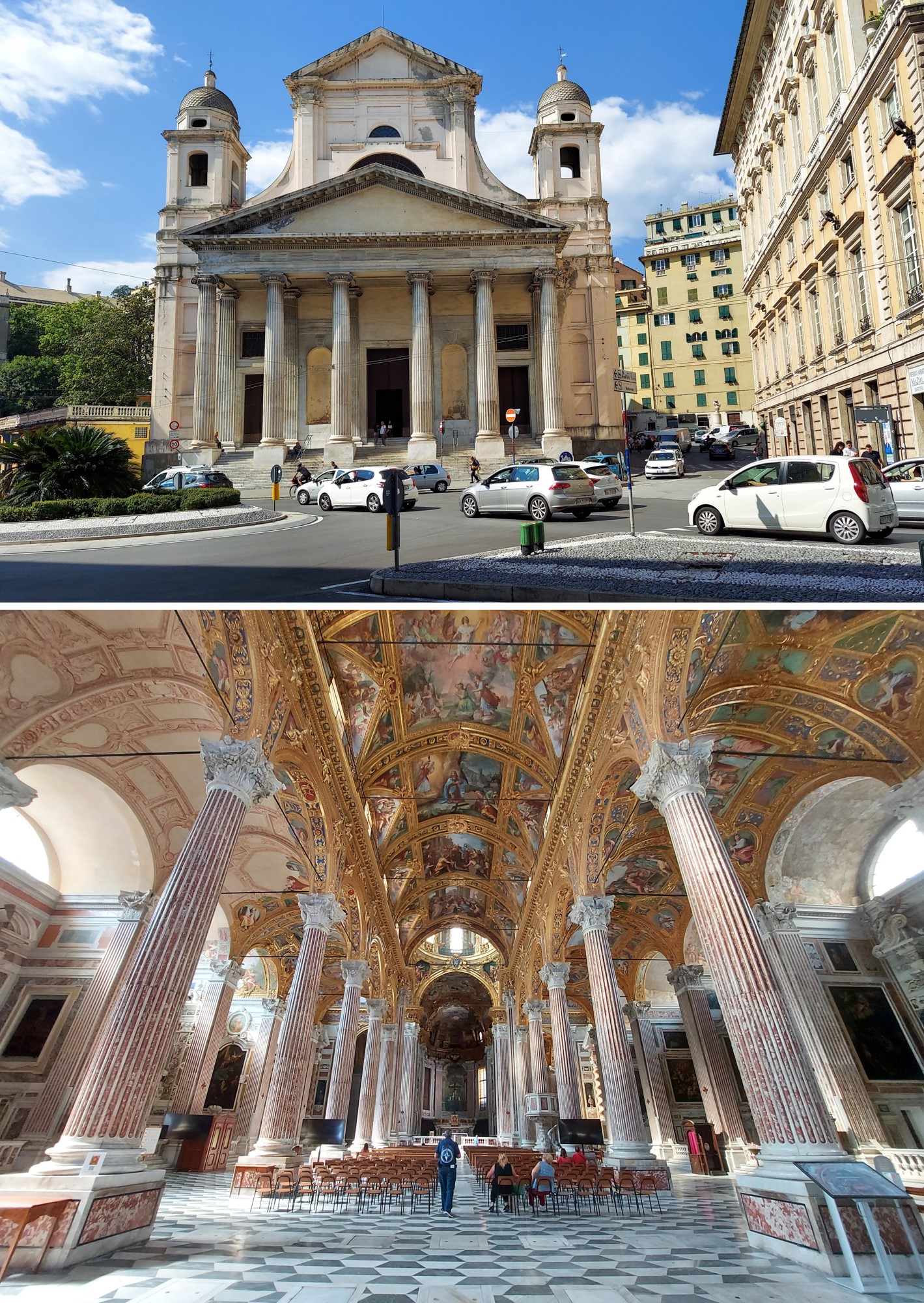
Finishing our one-day tour of Genoa, we came across one of those surprises that we were not scheduled to visit, the Basilica della Santissima Annunziata del Vastato. It is located in Piazza della Nunziata, in the Prè district. It is called Vastato because the area where it was built was outside the city walls, in an area where the houses had been demolished (devastated) for defensive reasons. It is one of the most representative churches of Genoese art of late Mannerism and, above all, of the so-called Genoese Baroque of the early 17th century. The interior, large and bright, was restored after severe damage caused in World War II. This temple has a Latin cross plan with three naves and a series of chapels in the side aisles, enriched with frescoes, paintings by extraordinary artists, inlaid marble and stuccoes in pure gold, the work of the best Genoese artists of the 17th century.
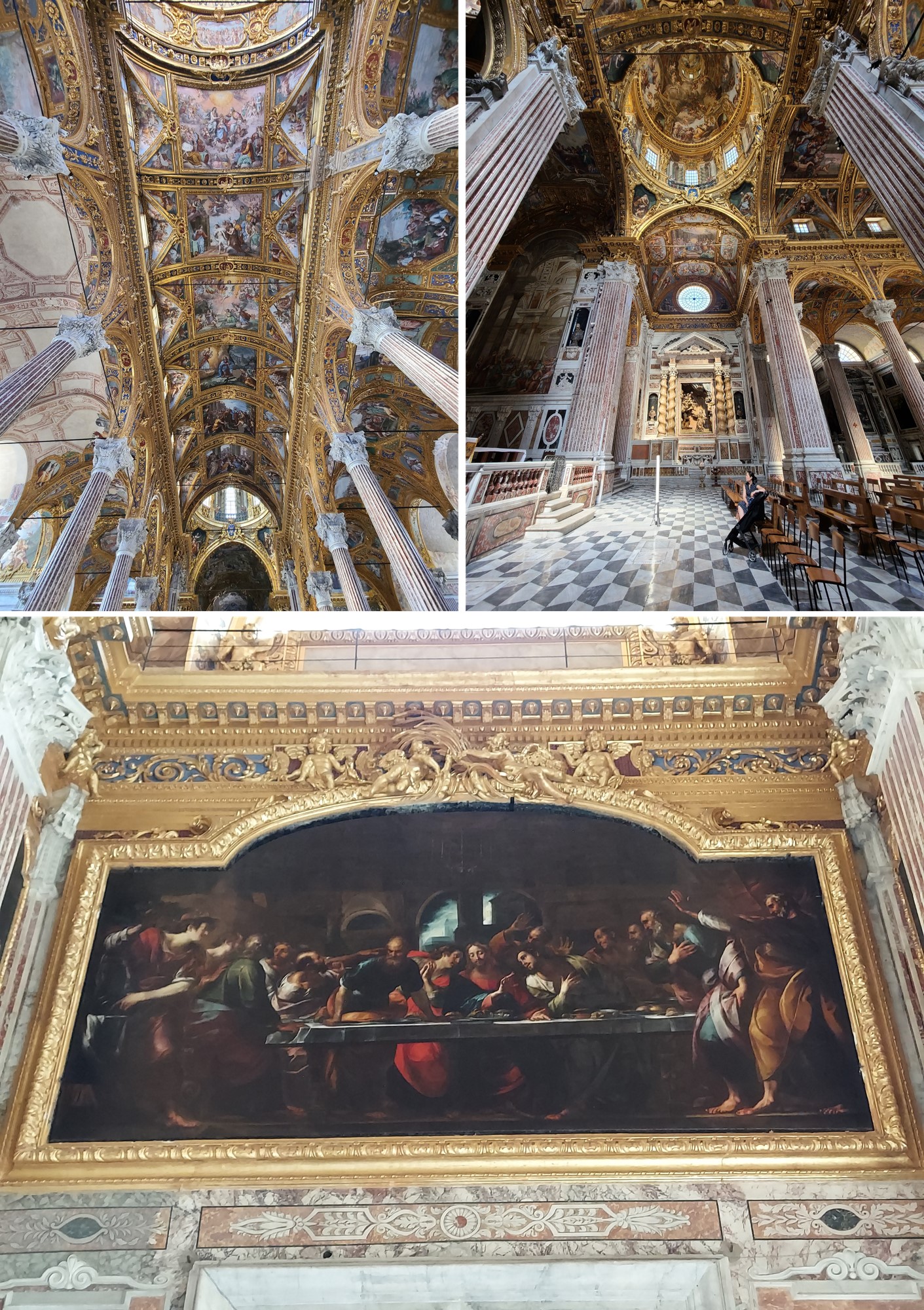
In the central transept, the ceiling of the dome has a fresco of the Assumption, considered the masterpiece of Giovanni Andrea Ansaldo, and later restored by Gregorio De Ferrari. Above the door of the central nave there is a “Last Supper” by Giulio Cesare Procaccini. After visiting Da Vinci’s “The Last Supper” in Milan, we learned that this theme was often depicted by artists and this painting is one such example.
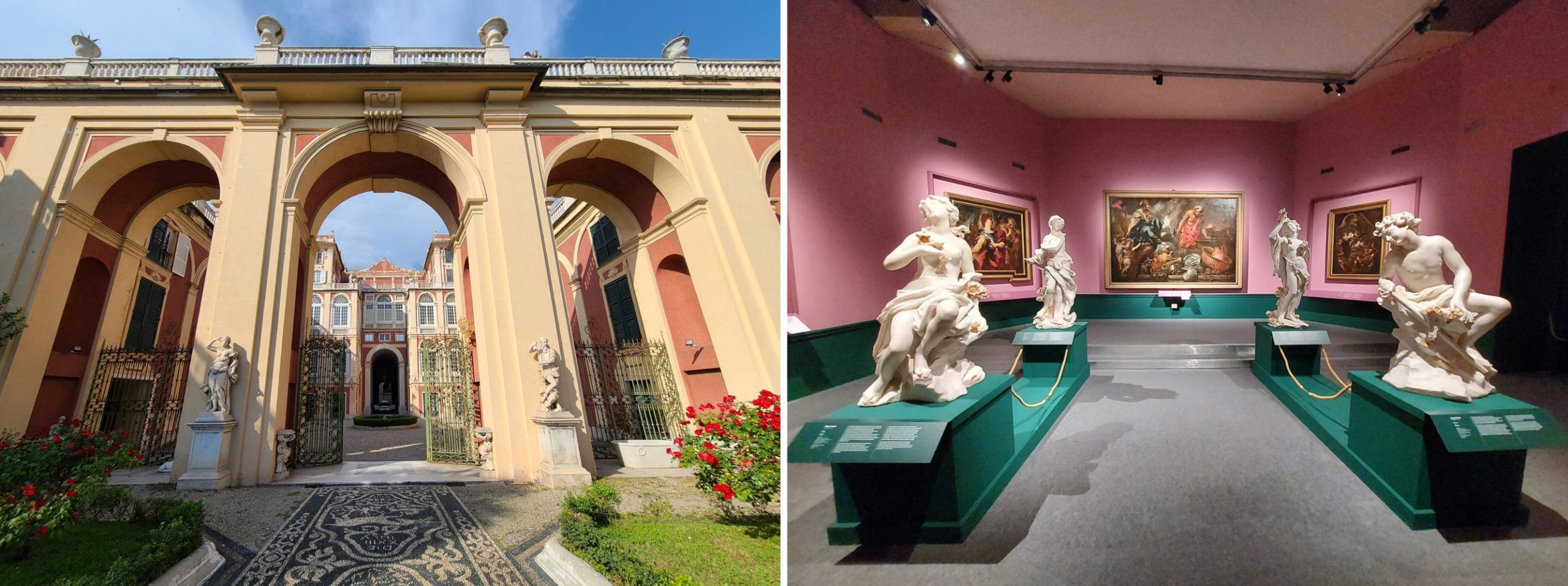
Perhaps you have wondered why we put the names of the places we visit in Italian, instead of writing them in English. Something we have learned in our travels is that the names of streets, avenues, squares, palaces, churches, etc., should be written in the language of the country visited. As an example, when writing the name Chiostro di Sant’Andrea, it is easier to identify it on the signs, once we are familiar with the name in Italian.
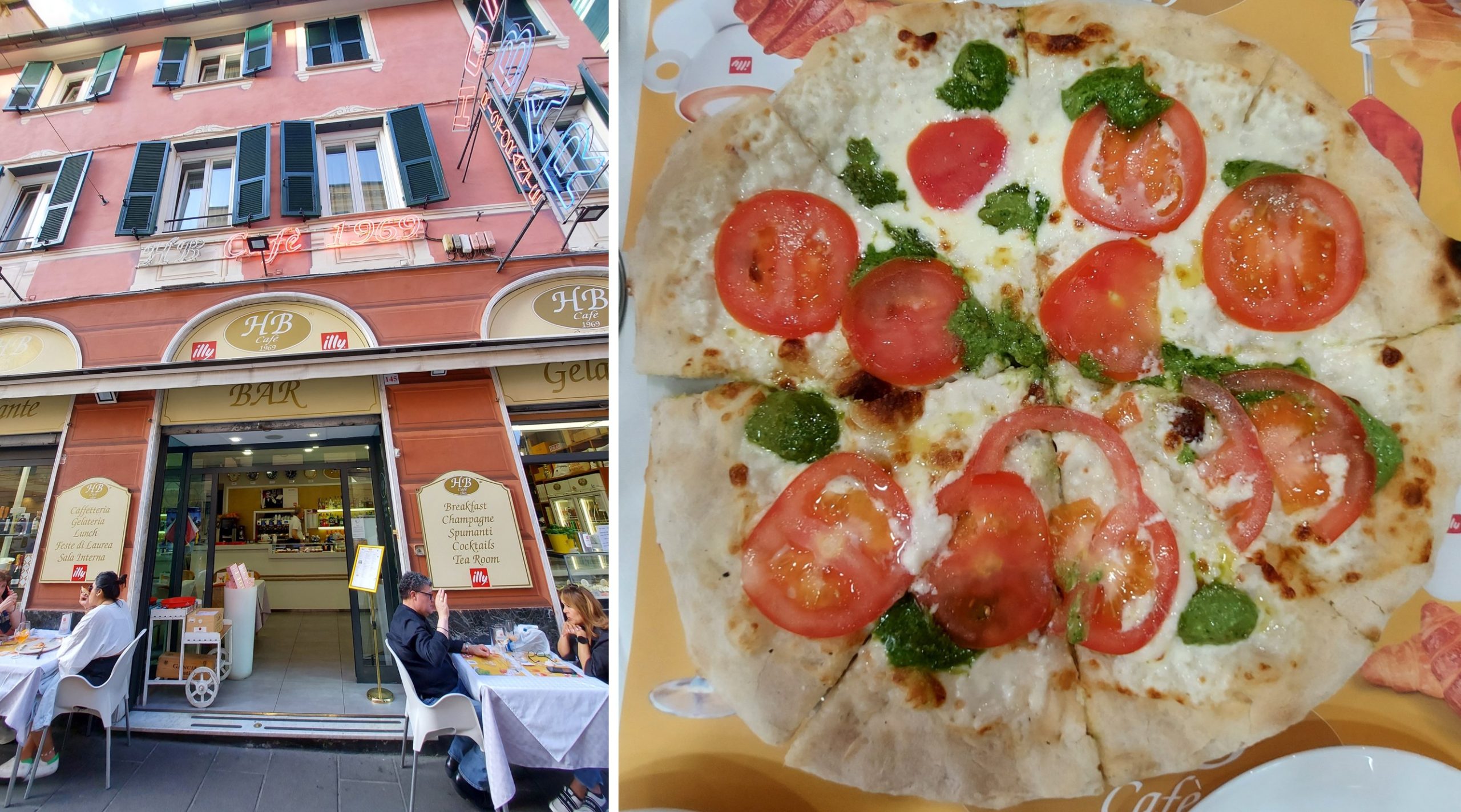
In short, Genoa invites you to enjoy it and its undoubtedly worth including in any travel plan to Italy.

